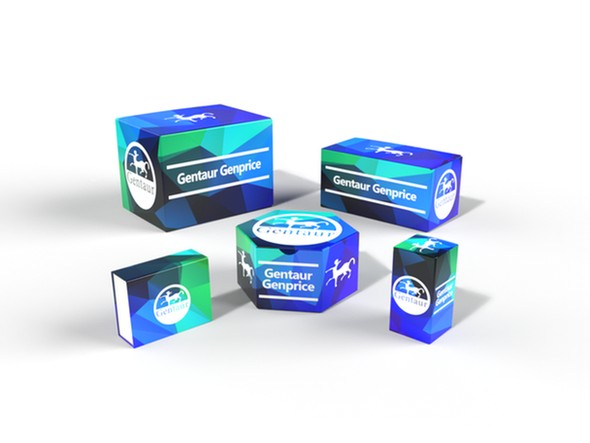Description
FABP2 Antibody | 16-492 | Gentaur UK, US & Europe Distribution
Host: Rabbit
Reactivity: Human, Mouse, Rat
Homology: N/A
Immunogen: Recombinant fusion protein containing a sequence corresponding to amino acids 1-132 of human FABP2 (NP_000125.2) .
Research Area: Cancer, Cell Cycle, Signal Transduction, Stem Cell
Tested Application: WB, IF
Application: WB: 1:500 - 1:2000
IF: 1:10 - 1:100
Specificiy: N/A
Positive Control 1: Mouse intestine
Positive Control 2: Rat intestine
Positive Control 3: N/A
Positive Control 4: N/A
Positive Control 5: N/A
Positive Control 6: N/A
Molecular Weight: Observed: 15kDa
Validation: N/A
Isoform: N/A
Purification: Affinity purification
Clonality: Polyclonal
Clone: N/A
Isotype: IgG
Conjugate: Unconjugated
Physical State: Liquid
Buffer: PBS with 0.02% sodium azide, 50% glycerol, pH7.3.
Concentration: N/A
Storage Condition: Store at -20˚C. Avoid freeze / thaw cycles.
Alternate Name: FABP2, fatty acid binding protein 2, intestinal, FABPI, I-FABP, MGC133132, Fatty acid-binding protein, intestinal fatty acid binding protein 2
User Note: Optimal dilutions for each application to be determined by the researcher.
BACKGROUND: The intracellular fatty acid-binding proteins (FABPs) belong to a multigene family with nearly twenty identified members. FABPs are divided into at least three distinct types, namely the hepatic-, intestinal- and cardiac-type. They form 14-15 kDa proteins and are thought to participate in the uptake, intracellular metabolism and/or transport of long-chain fatty acids. They may also be responsible in the modulation of cell growth and proliferation. Intestinal fatty acid-binding protein 2 gene contains four exons and is an abundant cytosolic protein in small intestine epithelial cells. This gene has a polymorphism at codon 54 that identified an alanine-encoding allele and a threonine-encoding allele. Thr-54 protein is associated with increased fat oxidation and insulin resistance.






